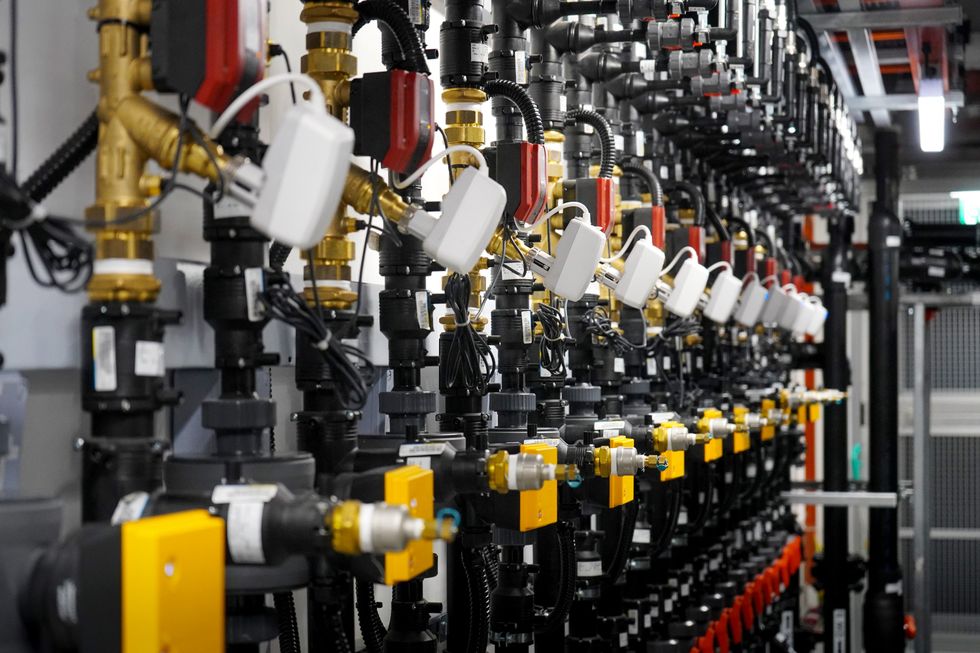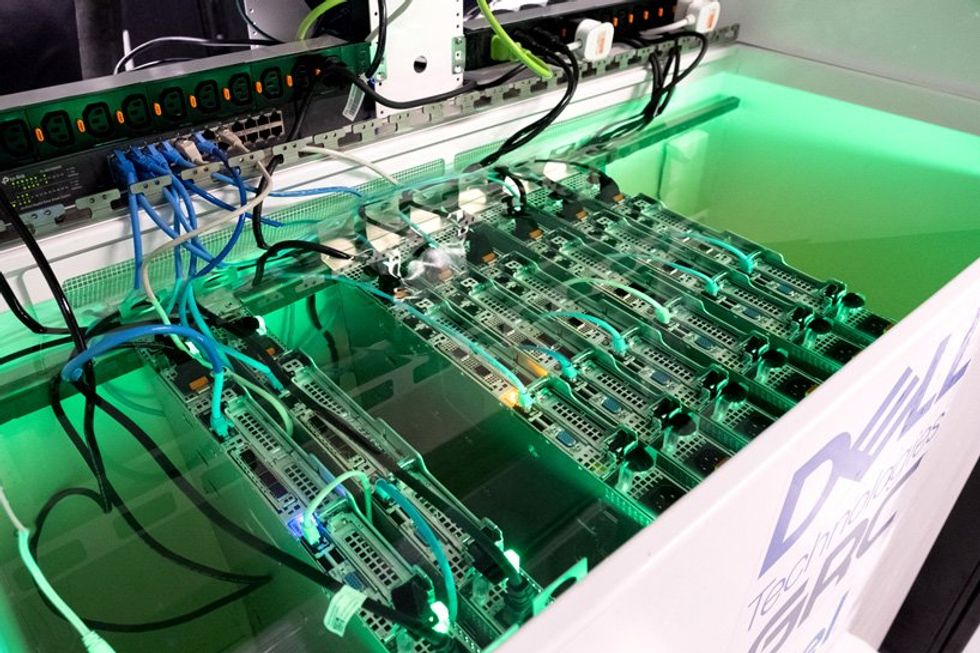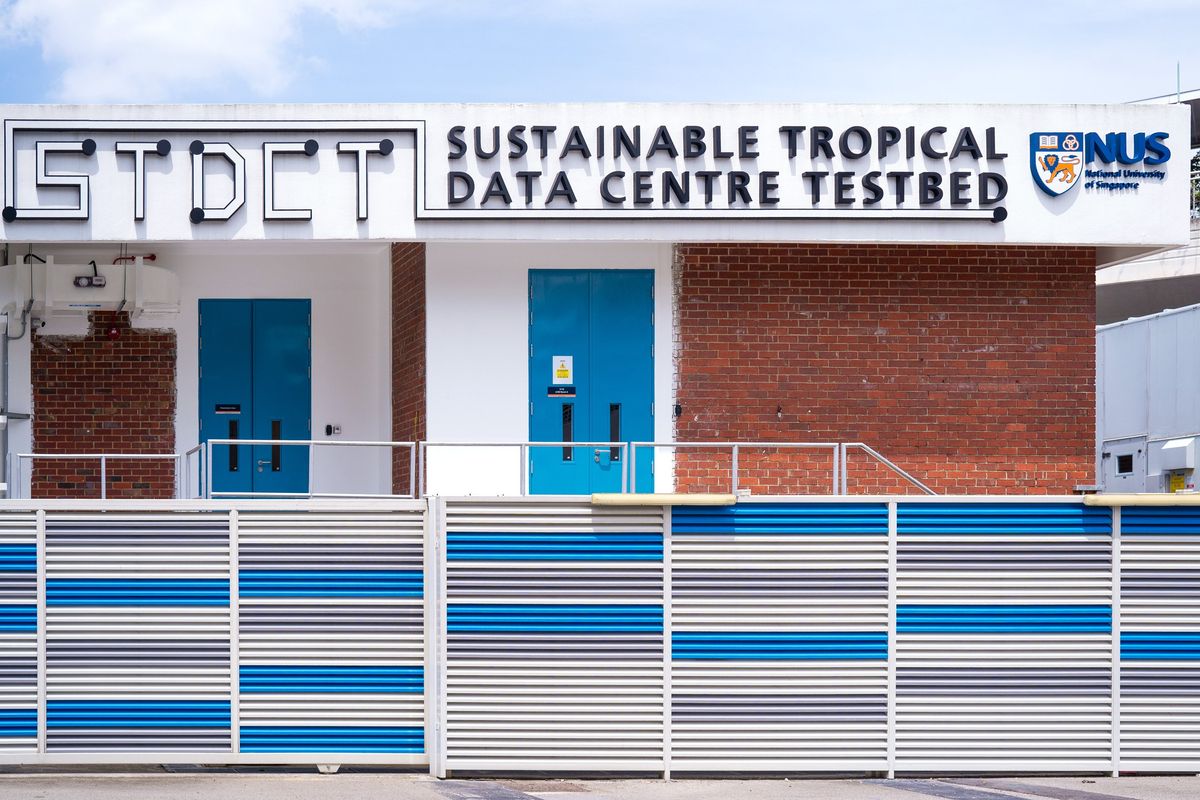Tropical climates could make racks of hot-running data servers even hotter. But researchers in Singapore are now testing ways to cool this trend, sustainably.
The National University of Singapore in Queenstown (NUS), Nanyang Technological University, Singapore (NTUS), together with Singapore’s National Research Foundation and Infocomm Media Development Authority, as well as 20 IT companies, have collaborated to establish the industry’s first data-center testbed for tropical climates. Dubbed the Sustainable Tropical Data Centre Testbed (STDCT), the research facility occupies a floor area of 770 square meters in NUS and officially opened its door for business in November, after the idea was conceived in 2021.
“Data centers are crucial to Singapore’s digital economy,” says Poh Seng Lee, associate professor of mechanical engineering at NUS. “They are the backbone of data processing and storage, enabling a wide range of digital services.”
“Regarding conventional cooling systems, the temperature of the air entering the data centers may already be too high in tropical environments, so ventilation won’t be sufficient.” —Hans Hilgenkam, University of Twente, Netherlands
Large centers, however, contain tens of thousands of IT devices, which generate a lot of heat, roughly equal to the amount of power consumed. That amount of waste heat makes life challenging for data center operators in Singapore, which has a mean daily temperature of between 31 to 33 °C, not to mention humidity of more than 90 percent in the mornings, and greater than 100 percent during rainy periods.
“High humidity can lead to condensation and so poses risks of corrosion, which can damage sensitive electronic equipment,” Lee points out.
In such a climate, conventional air-cooling and mechanical-ventilation systems, though widely deployed in other regions, struggle to cope.

“Regarding conventional cooling systems, the temperature of the air entering the data centers may already be too high in tropical environments, so ventilation won’t be sufficient,” says Hans Hilgenkamp, professor of applied physics and nanotechnology at the University of Twente in Enschede, Netherlands. “The air first has to be actively cooled before bringing it in.”
Also, conventional systems require more energy to maintain optimal temperatures in data centers of between 20 to 24 °C. This increases both operation costs and carbon emissions. Consequently, STDCT is focusing on testing and developing more suitable cooling technologies to help centers run reliably and operate sustainably.
Two new technologies being tested are a StatePoint Liquid Cooling system (SPLC), and a desiccant-coated heat-exchanger system. SPLC was codeveloped by Meta (formerly Facebook) and Nortek Air Solutions, a heating and ventilation manufacturer based in O’Fallon, Mo. A hydrophobic microporous membrane creates a liquid-to-air heat exchanger that chills water, which can then be used to supply a variety of cooling methods.
The SPLC is noteworthy, says Lee, because it uses an indirect evaporation-cooling technique that is more efficient in hot and humid environments, as it produces cold water instead of cold air, and is designed to optimize power usage effectiveness, or PUE.
The prototype desiccant-coated heat and mass exchanger is coated with a desiccant material that absorbs water vapor from the air passing over it, drying it in the process. The dehumidification system undergoes regeneration using the waste heat produced by the liquid cooling process to dry the desiccant when it becomes saturated, and the cycle is repeated.
“We chose all these technologies for their potential to drastically reduce energy consumption and greenhouse gas emissions—the specific challenges facing tropical data center operations.” —Poh Seng Lee, National University of Singapore
“I especially like the idea of using desiccant-coated heat exchangers,” says Hilgenkamp. “They actually make use of the high humidity in the air during the cooling process. The more humid the air, the more the desiccant can take moisture out, which is the basis of the cooling. It also makes use of the high ambient temperature, as the desiccant has to be regenerated at elevated temperatures. This makes good use of waste heat.”
In addition to these technologies, “the testbed has direct-to-chip hybrid cooling systems, which combine liquid and air cooling at the chip level to manage severe temperatures,” says Lee. “We chose all these technologies for their potential to drastically reduce energy consumption and greenhouse gas emissions—the specific challenges facing tropical data center operations.”
As for NTUS, it is bringing in its own range of expertise for optimizing operations and the design of data centers for tropical climates.
“These new cooling technologies pose challenges and at the same time could lead to a new paradigm in data center operations,” says Professor Yonggang Wen, program codirector of STDCT and professor of computer science and engineering at NTUS. “So we are using AI to optimize data center operations, and the capabilities of digital twins to derisk their adoption. You can think of what we’re doing as being similar to how pilots are trained on flight simulators before they actually fly planes.”

The STDCT road map calls for reductions in energy by up to 40 percent, water usage by 30 to 40 percent, and carbon dioxide emissions by up to 40 percent. Additionally, the aim is to achieve a PUE of less than 1.2 for a combination of air and liquid cooling, which is lower than the government’s requirement of 1.3, and a global average of 1.5.
“Cooling and ventilation takes up about 40 percent of a data center’s energy consumption nowadays,” says Hilgenkamp. “An improvement of the energy consumption by 40 percent cannot come only from improving cooling. They will also have to look for improvements in semiconductor development and computer hardware in terms of the number of operations per watt, as well as find ways to make use of waste heat.”
Beyond advancing new technologies, STDCT is working to foster collaboration with industry and the government by providing a platform for joint research and the creation of standards and best practices for sustainable data centers. In this way, Singapore hopes to become a leading center for green services in the regions, says Lee. To date, he says, more than S$30 million (US $22.5 million) has been invested, including private and government funds and the value of equipment provided by the IT partners.
“Later, these companies—which include Meta, Intel, and Dell Technologies—will assist with system integration and scaling issues that arise,” says Lee. “The final stage involves our working together to bring successful technologies to the market for wider adoption in tropical climates.”
- Want an Energy-Efficient Data Center? Build It Underwater ›
- Should Data Centers Be Kept Cool—Or Warm? ›



